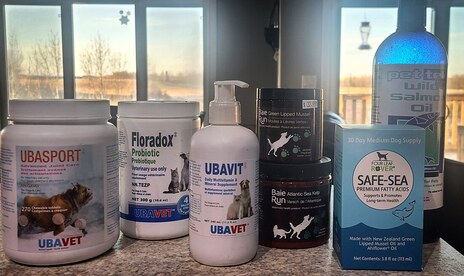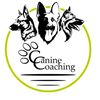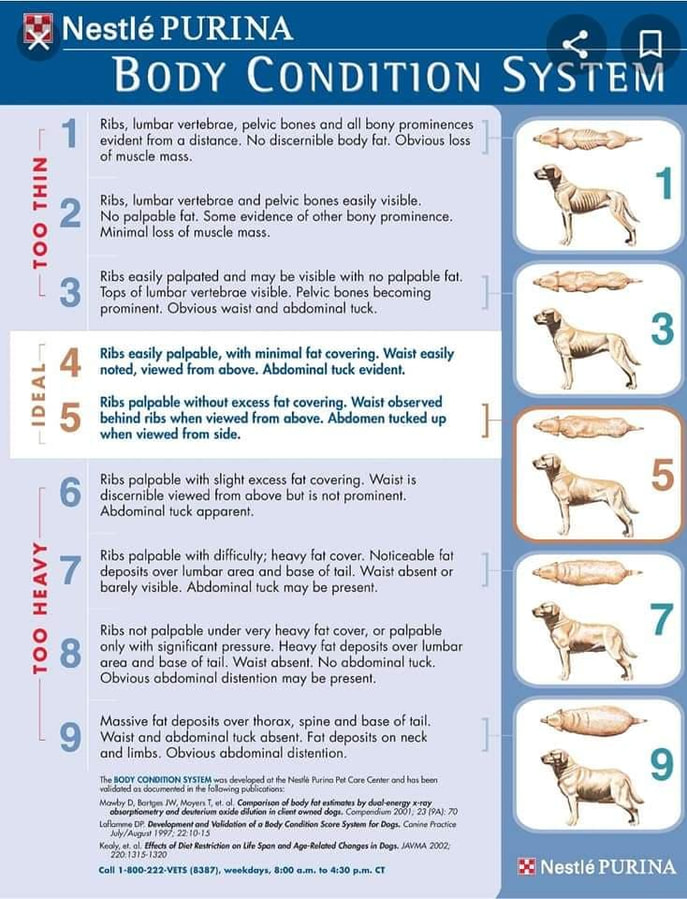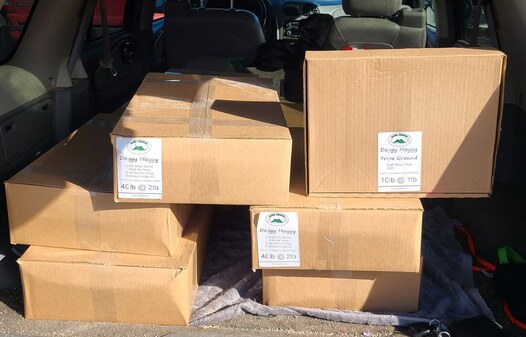
Our choice is typically a Canadian-made kibble or raw diet. Both Sam and Alyssia’s dogs are raw-fed at the moment. When raw feeding it is VERY important to do your research and make sure your dog is getting a balanced diet. This can be done through different foods and supplements. Enjoy the photo of our supplements - our dogs do not get these every day but many are in our rotation. (Want to know what’s in our bowl on a day-to-day basis? We will add it as a footnote at the end of this blog.) We love to try and find natural ways to make sure they are getting their vitamins and minerals such as turkey feet (which are a natural source of glucosamine & chondroitin and serve as natural toothbrushes), quail eggs (which offer a burst of protein great for days we plan hikes), whole prey foods like whole raw fish (which offer omega 3's and 6's and the oils brighten and add shine to our coats), veggies (many of which are high in vitamin A which promotes eye health, are rich in antioxidants and promote healthy bowels) and raw bones/bone broth (which adds nutrients and minerals, as well as bone broth, is great if you have concerns about getting enough liquid in your dog's diet). Any of these can be added whether you are feeding kibble or raw. In our opinion (especially for our dog’s health specifically) we think Omega 3 & 6’s, as well as glucosamine and chondroitin, are super important to make sure are in your dog’s kibble/raw or should be added as an additional supplement if they are not. Omega fatty acids help with your dog’s skin and coat, cognitive function, inflammation, and immune system. Glucosamine and chondroitin are extremely advantageous for joint health and something many large breeds and/or athletic dogs can benefit from having added to their diet. It is crucial to do your research though as you can also give TOO much of a supplement which can be bad for your dog’s health.
Another important thing to keep in mind is any time you are switching foods it is best to do this gradually. Typically when we switch foods we mix ¼ of the new food with ¾ of the old food for the first week, ½ and ½ the second week, and then ¾ new food with ¼ old food the third week. (This is JUST a guideline and to be used with switching kibble to kibble. If switching kibble to raw there are varying opinions out there but many agree that it is best to fast your dog a meal and then start with the raw the next meal.) Any time you switch food you run the risk of disturbing your dog’s gastrointestinal system and you may notice they experience some stomach upset.
We are NOT pet nutritionists or experts in this field. As we mentioned it is just an area of passion for us. If you do have questions please do not hesitate to ask and if we know the answer we would love to help you out and if it isn’t something we know we have tons of resources that we can point to you to find the information you seek. Also - if you want to join our dog food order please let us know.
What is in YOUR dog’s bowl? We love discussing food and feeding habits as it is a great way to share and gain knowledge!
** Sam’s dogs eat Doggy Moggy Beef Bison raw food supplied by Grand Dog Essentials. Twice a week they get salmon oil (omega fatty acids). Three to four times a week they get a Greek yogurt (probiotic for stomach health) mix with kelp (another probiotic), and green-lipped mussels (excellent for joint health and inflammation). They get a UBAVet Glucosamine and Chondroitin tablet daily (which they eat like candy!). They also get a UBAvet Daily Vitamin supplement each morning. We add different veggie combos to the raw food as well as a couple of times a week they also get bone broth. Throughout the week they often get different treats that serve as supplements as well like turkey feet and quail eggs. **



 RSS Feed
RSS Feed
